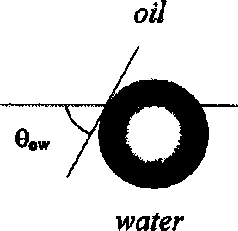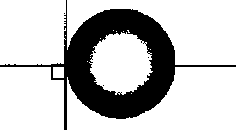Chapter 2
characterize clay wettability.
Solids which are partially hydrophobic with contact angle θ > 90o (measured
through the water) can also act as emulsifiers to make water-in-oil emulsions
more stable. Figure 2.9 [35] shows the wettability of solids and the types of
emulsions formed by the effect of solids wettability.



water-wet amphiphilic oil-wet
Wettability of solids
oil


water
oil-in-water emulsions
water-in-oil emulsions
Figure 2.9 Wettability of solids and the types of emulsions
For hydrophilic solids, the contact angle is smaller than 90o. The surface of
solids is water-wet and the solids tend to stay in water phase. On the contrary, for
31
More intriguing information
1. The name is absent2. The Role of Immigration in Sustaining the Social Security System: A Political Economy Approach
3. Party Groups and Policy Positions in the European Parliament
4. Methods for the thematic synthesis of qualitative research in systematic reviews
5. Thresholds for Employment and Unemployment - a Spatial Analysis of German Regional Labour Markets 1992-2000
6. Forecasting Financial Crises and Contagion in Asia using Dynamic Factor Analysis
7. Secondary stress in Brazilian Portuguese: the interplay between production and perception studies
8. GENE EXPRESSION AND ITS DISCONTENTS Developmental disorders as dysfunctions of epigenetic cognition
9. Response speeds of direct and securitized real estate to shocks in the fundamentals
10. Knowledge and Learning in Complex Urban Renewal Projects; Towards a Process Design